Open House for New Denver International Airport, October 1993
Courtesy Wikipedia, the free encyclopedia for some text.
Edited by David Barth February 2016. Photos were taken by David Barth except where otherwise noted.
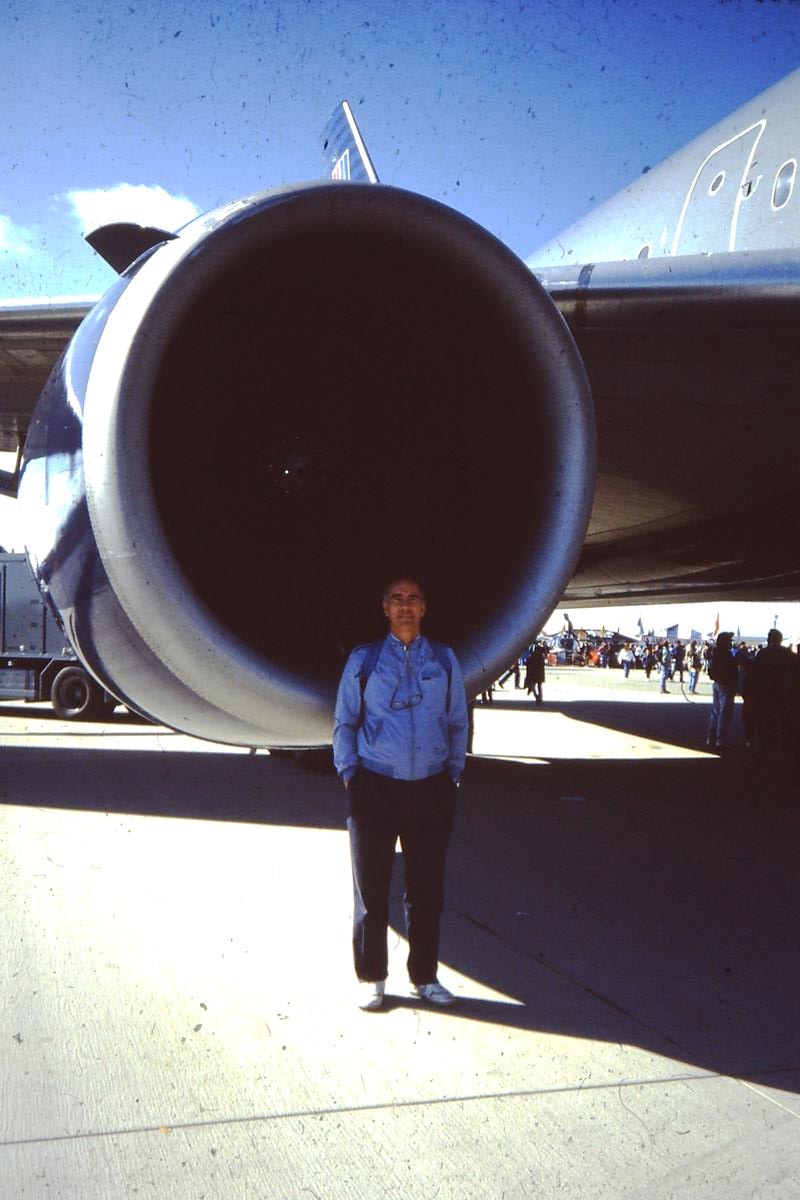 |
David Barth at the open house for new Denver
International Airport, October 1993. |
This photo was taken by Carol Mikesh of the front of engine number 3 on a United Airlines McDonnell Douglas DC-10.
From Wikipedia:
The McDonnell Douglas DC-10 is a three-engine wide-body jet airliner manufactured by McDonnell Douglas. The DC-10 has range for medium- to long-haul flights, capable of carrying a maximum of 380 passengers. Its most distinguishing feature is the two turbofan engines mounted on underwing pylons and a third engine at the base of the vertical stabilizer. The model was a successor to McDonnell Douglas's DC-8 for long-range operations, and competed in the same markets as the Lockheed L-1011 TriStar, which has a similar layout. The DC-10 had a poor safety record initially that was continuously improved over the years.
Production of the DC-10 ended in 1989 with 386 delivered to airlines and 60 to the U.S. Air Force as air-to-air refueling tankers, designated KC-10 Extender. The largest operator of the DC-10 was U.S. cargo airline Federal Express (FedEx). The DC-10 was succeeded by the related McDonnell Douglas MD-11. Boeing, which merged with McDonnell Douglas in 1997, conducted an upgrade program that equipped many in-service DC-10s with a glass cockpit that eliminated the flight engineer position. The upgraded aircraft were re-designated as MD-10s. The DC-10's last commercial passenger flight took place in February 2014, although freighter versions continued to operate. Despite the airliner's popularity, only a few DC-10s are on display, while other retired aircraft are in storage. DC-10s were also used for specialist services, such as the Orbis International Flying Eye Hospital, which had a compartment for performing eye surgery.
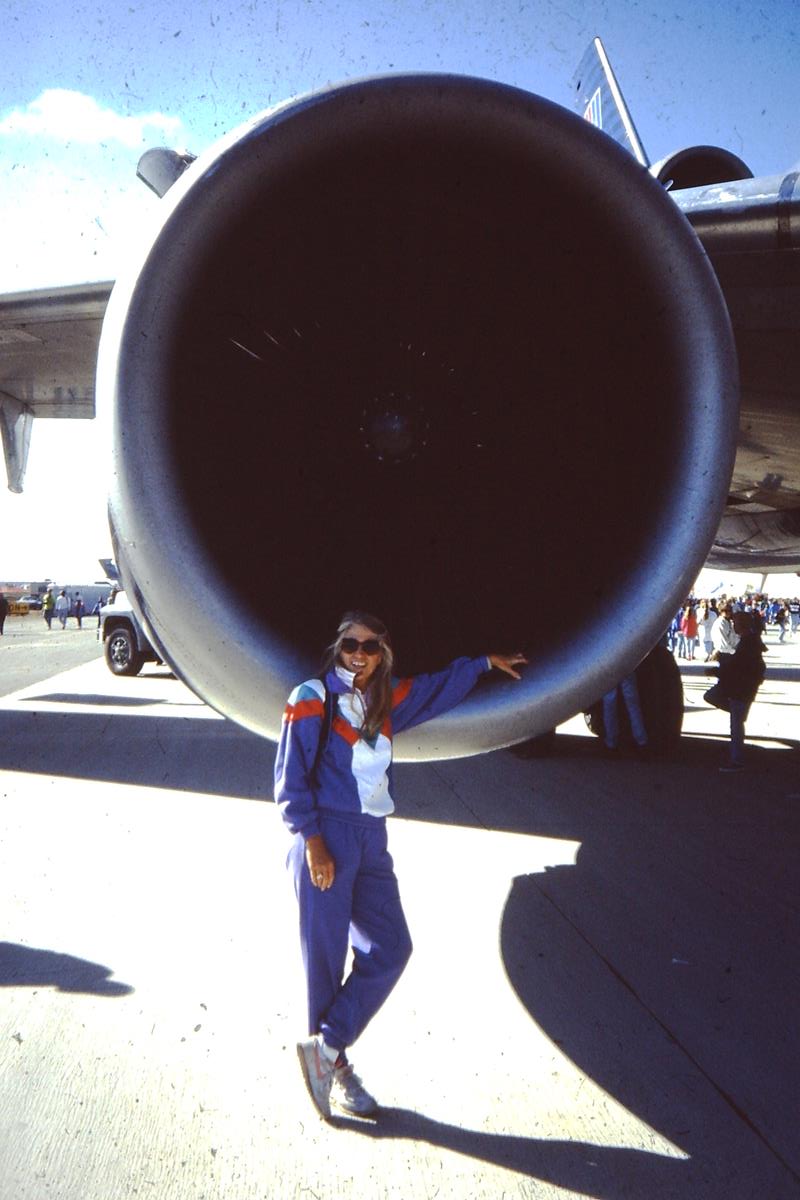 |
Carol Mikesh at the open house for new Denver
International Airport, October 1993. |
This photo was taken by David Barth of the front of engine number 3 on a United Airlines McDonnell Douglas DC-10.
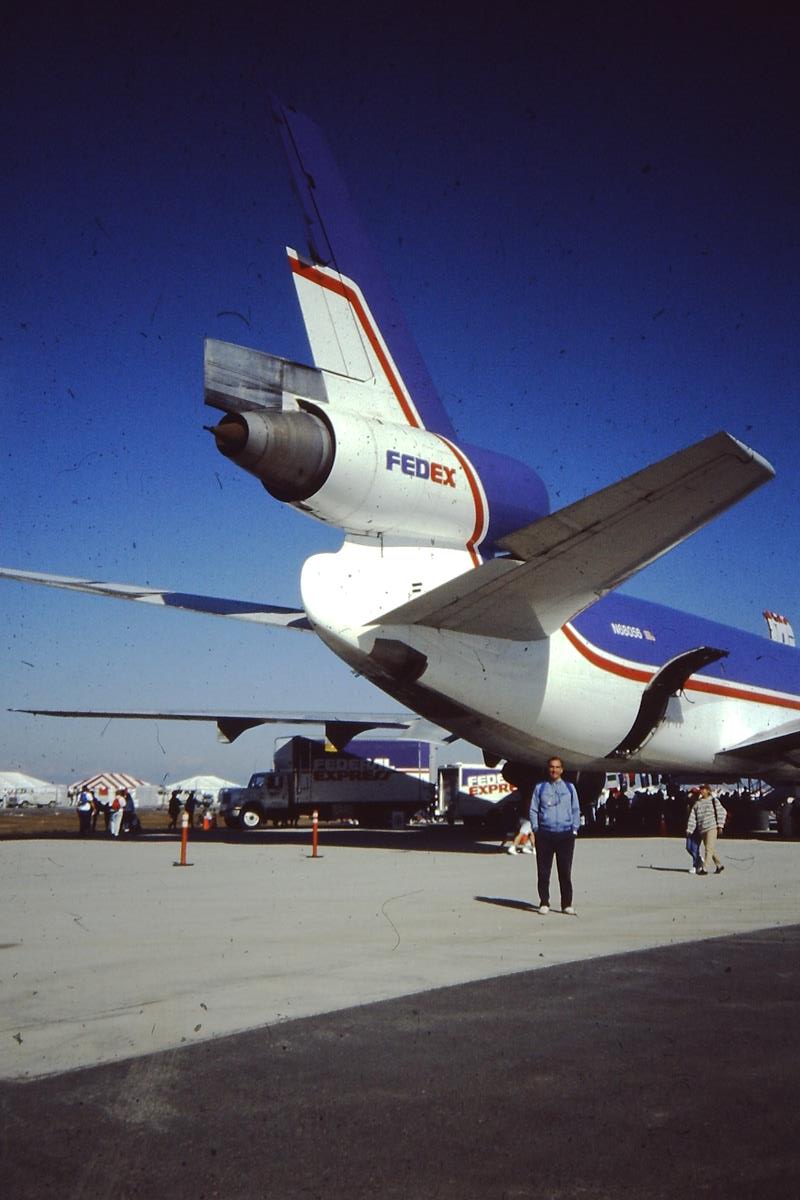 |
| Open house for new Denver International Airport, October 1993. |
David Barth at the tail of a Federal Express (FedEx) McDonnell Douglas DC-10. Photo was taken by Carol Mikesh.
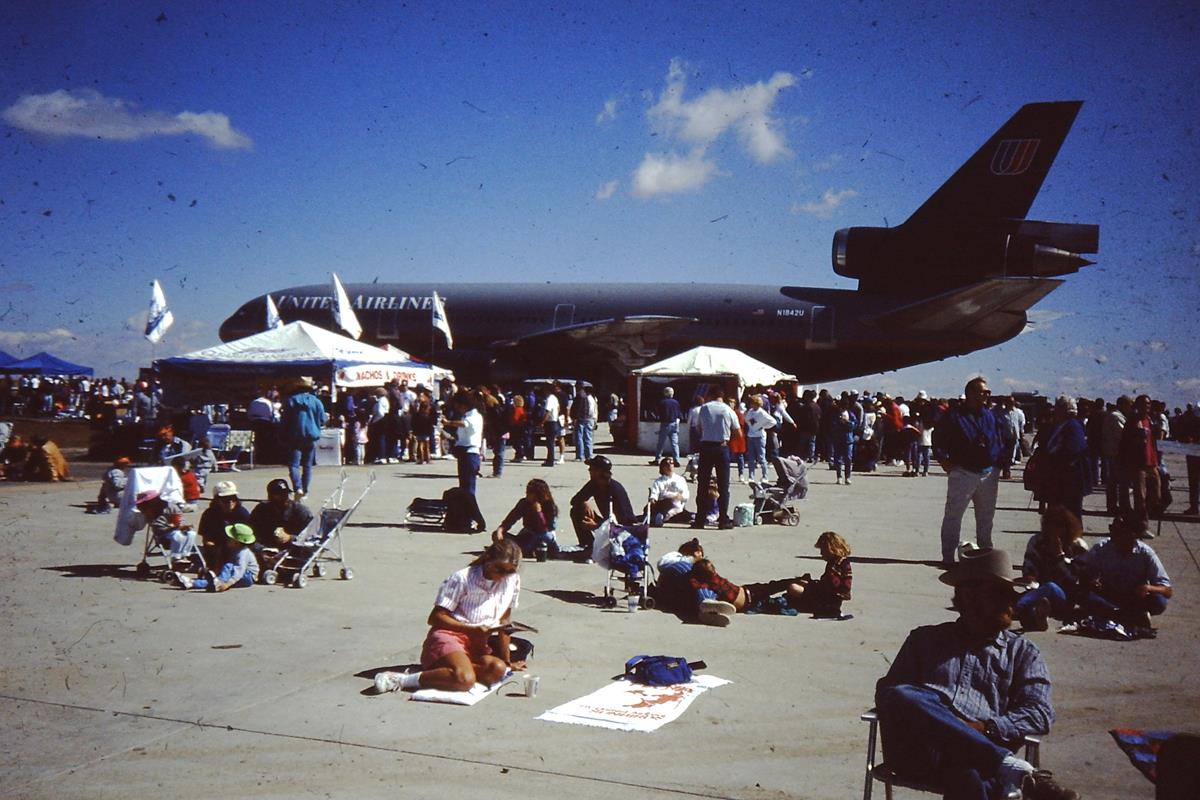 |
| Open House for New Denver International Airport, October 1993. |
Carol Mikesh reading while sitting on a towel on the tarmac of the new airport with a United Airlines McDonnell Douglas DC-10 in the background.
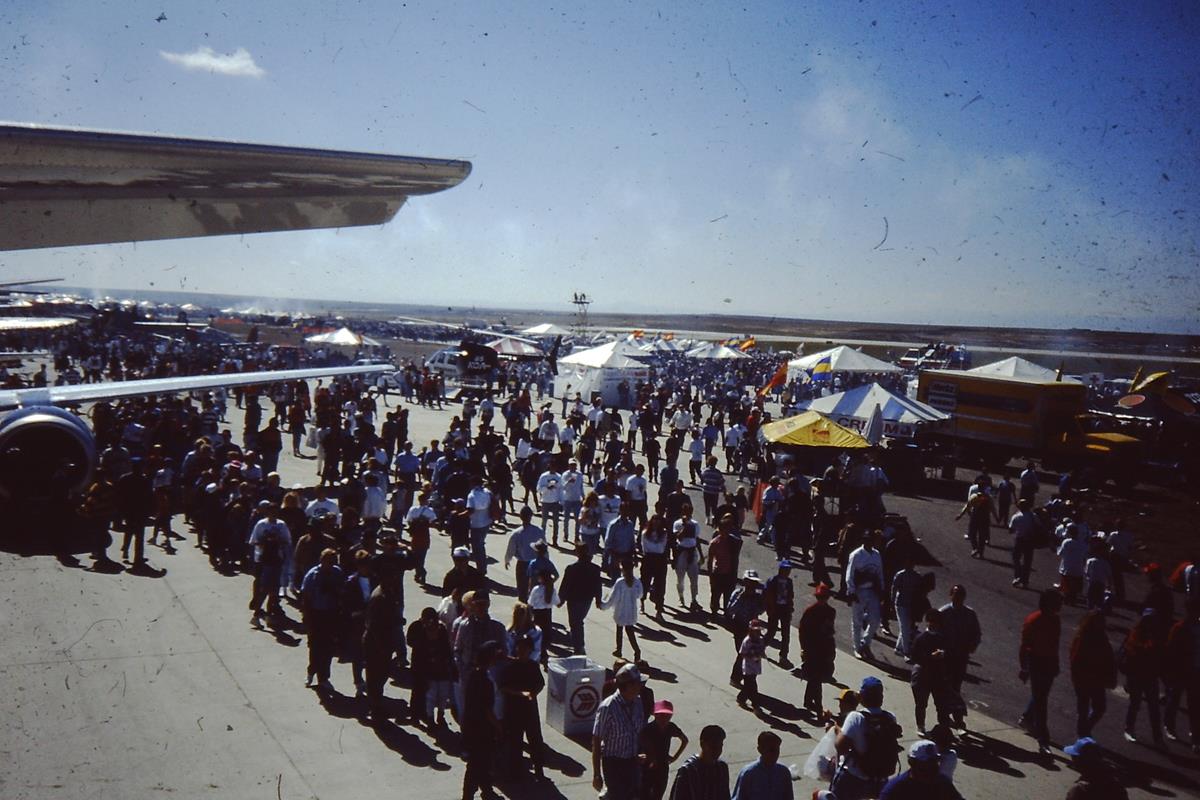 |
| Open House for New Denver International Airport, October 1993. |
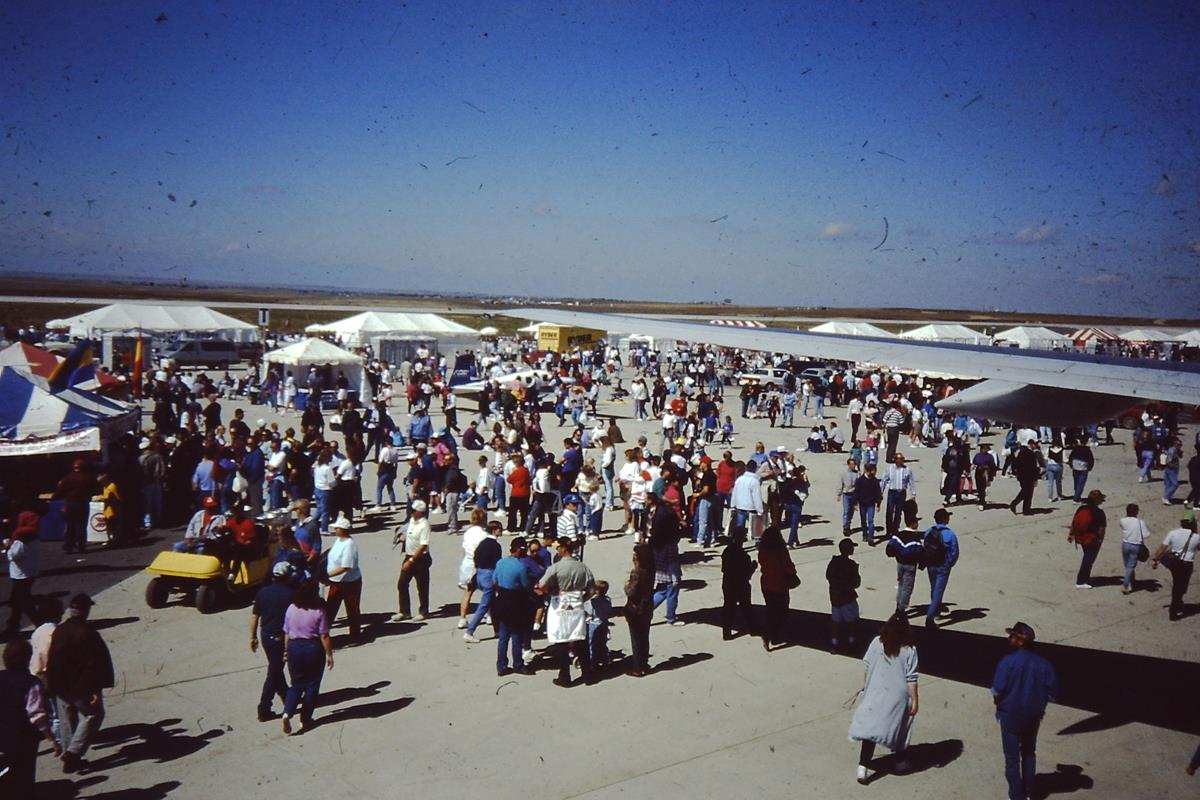 |
| Open House for New Denver International Airport, October 1993. |
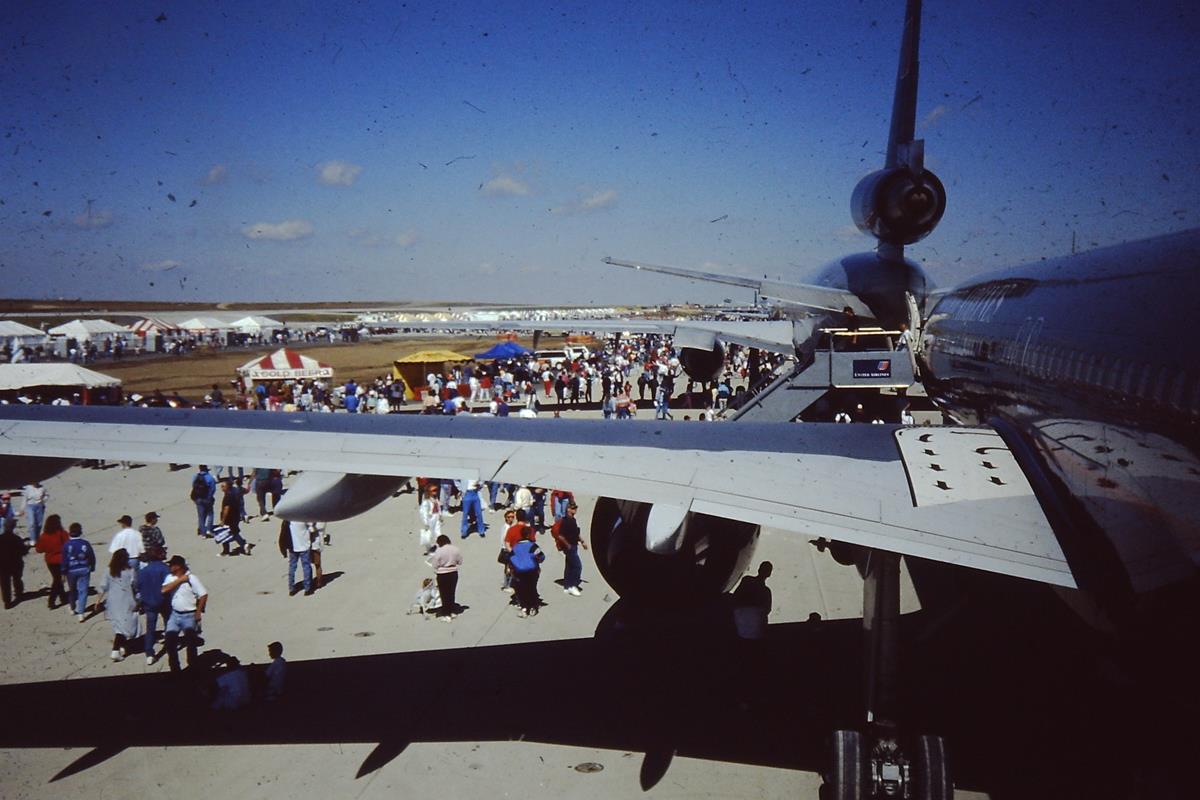 |
| Open House for New Denver International Airport, October 1993. |
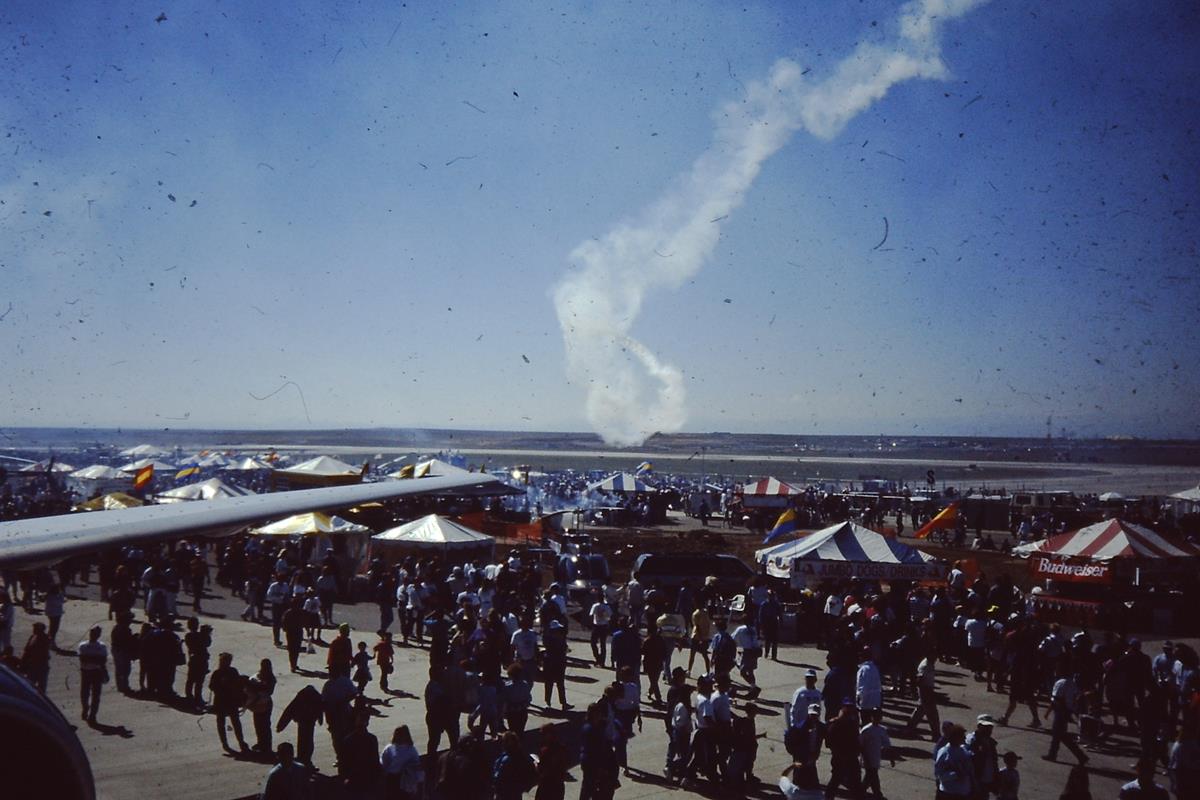 |
| Open House for New Denver International Airport, October 1993. |
Smoke trail is from an plane that took off and climbed at a high angle, emitting air show smoke as it began to ascend. Winds have distorted the smoke column.
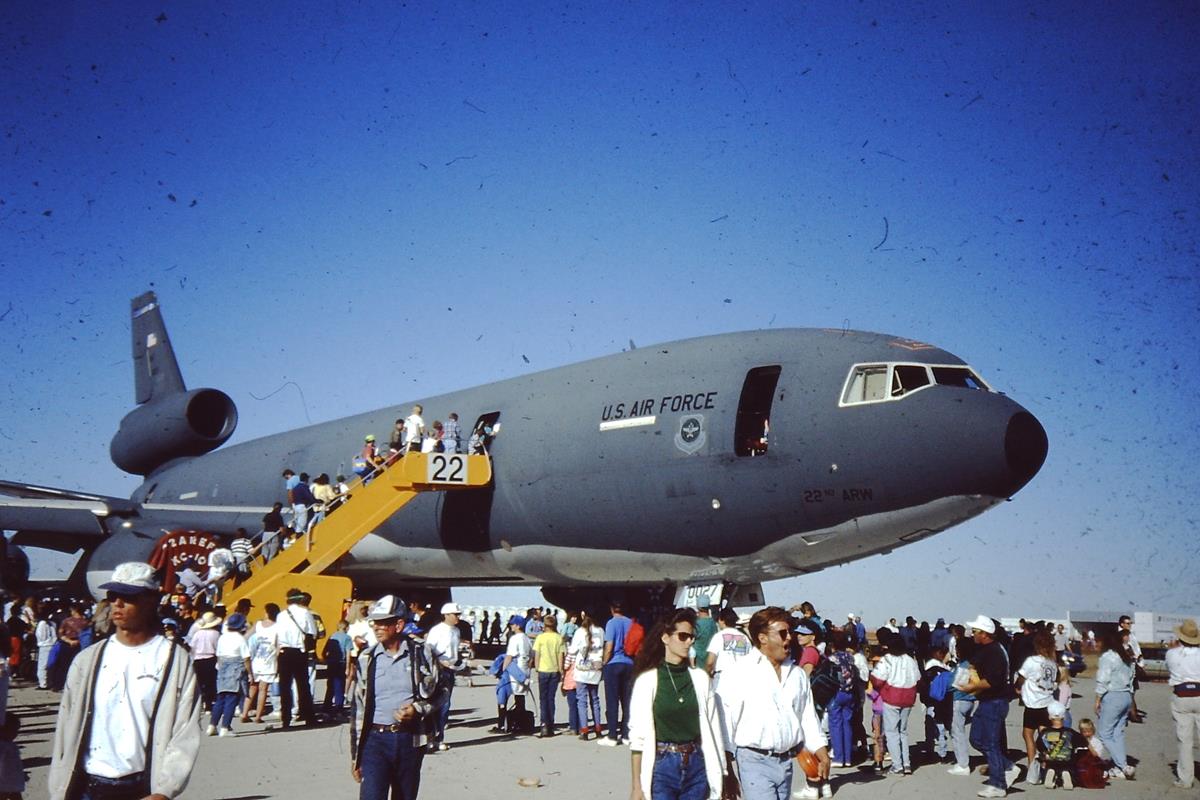 |
| Open House for New Denver International Airport, October 1993. |
The McDonnell Douglas KC-10 Extender is an aerial refueling tanker aircraft, the military version of the three-engined DC-10 airliner that was operated by the United States Air Force (USAF) as well as many commercial airlines throughout the world. Built from 1979 through 1987, it incorporated military-specific equipment for its primary roles of transport and aerial refueling. It was developed to replace the KC-135 Stratotanker, a narrow-body, four-engine transport from which the Boeing 707 commercial airliner was developed. Following experiences in Southeast Asia and the Middle East, it was realized that a longer range, more lengthy loiter-time on station, higher capacity tanker with additional cargo space was required to support military aircraft. A total of 60 KC-10s were purpose-built for the USAF by Boeing which merged with McDonnell Douglas in 1997. The Royal Netherlands Air Force operated two similar tankers designated KDC-10 that were converted from DC-10 commercial airliners instead of being ordered as military tankers from Boeing. Some DC-10s have been modified as slurry bombers to fight fires.
The KC-10 plays a key role in the mobilization of US military assets, taking part in overseas operations far from home. These aircraft performed airlift and aerial refueling during the 1986 bombing of Libya (Operation Eldorado Canyon), the 1990–91 Gulf War with Iraq (Operations Desert Shield and Desert Storm), the 1999 NATO bombing of Yugoslavia (Operation Allied Force), War in Afghanistan (Operations Enduring Freedom), and Iraq War (Operations Iraqi Freedom and New Dawn). The KC-10 is expected to serve until 2043.
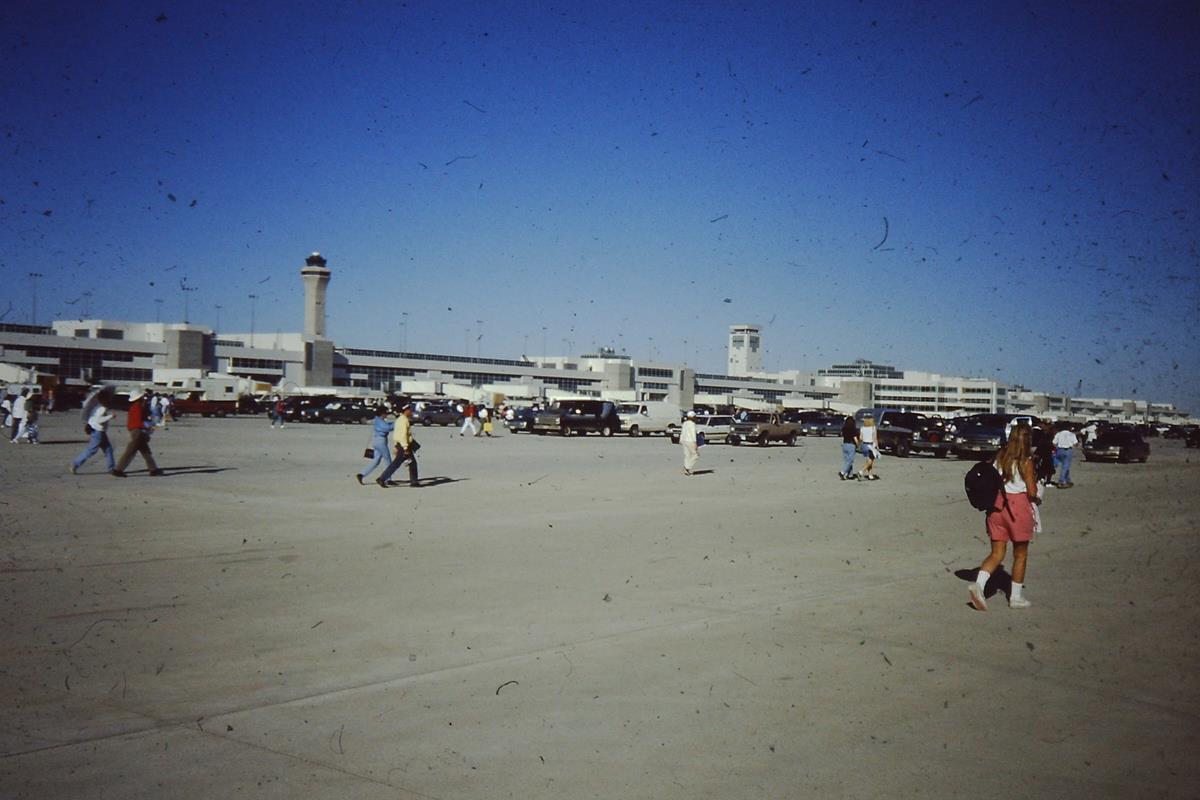 |
| Open House for New Denver International Airport, October 1993. |
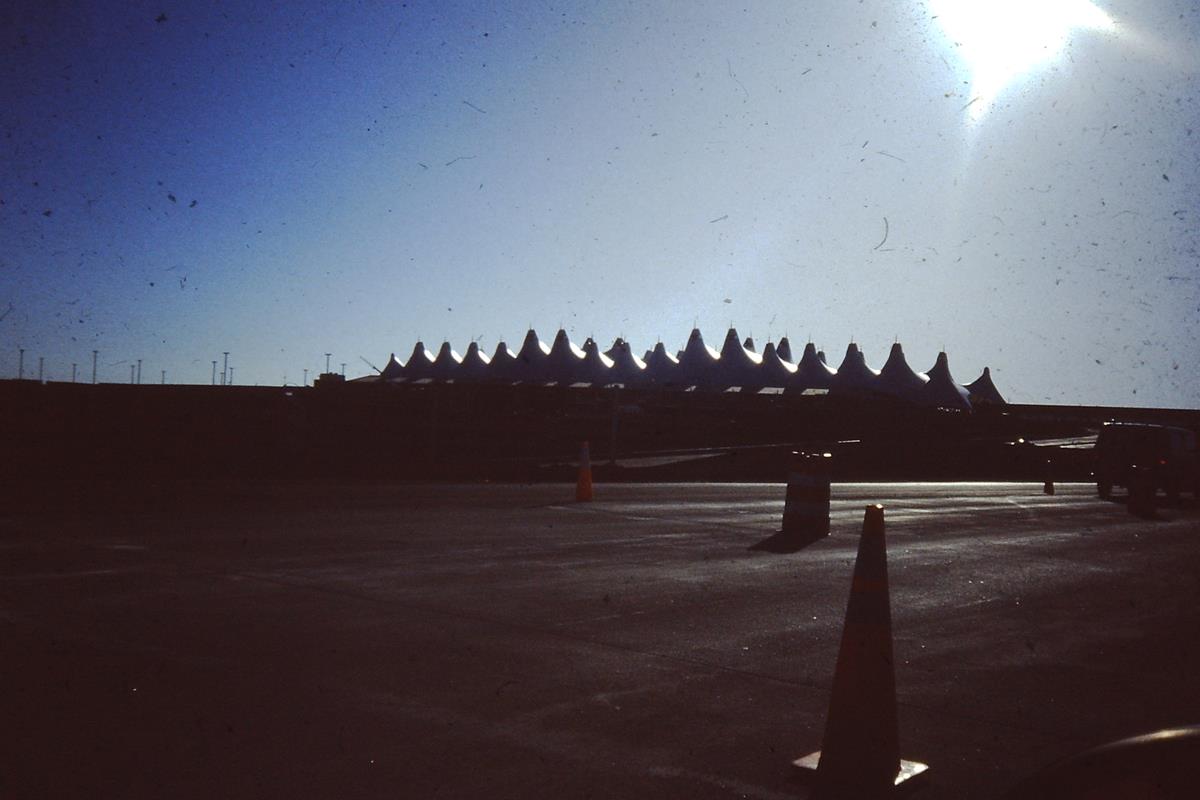 |
| Open House for New Denver International Airport, October 1993. |
The characteristic "tent" design for the airport's main concourse.
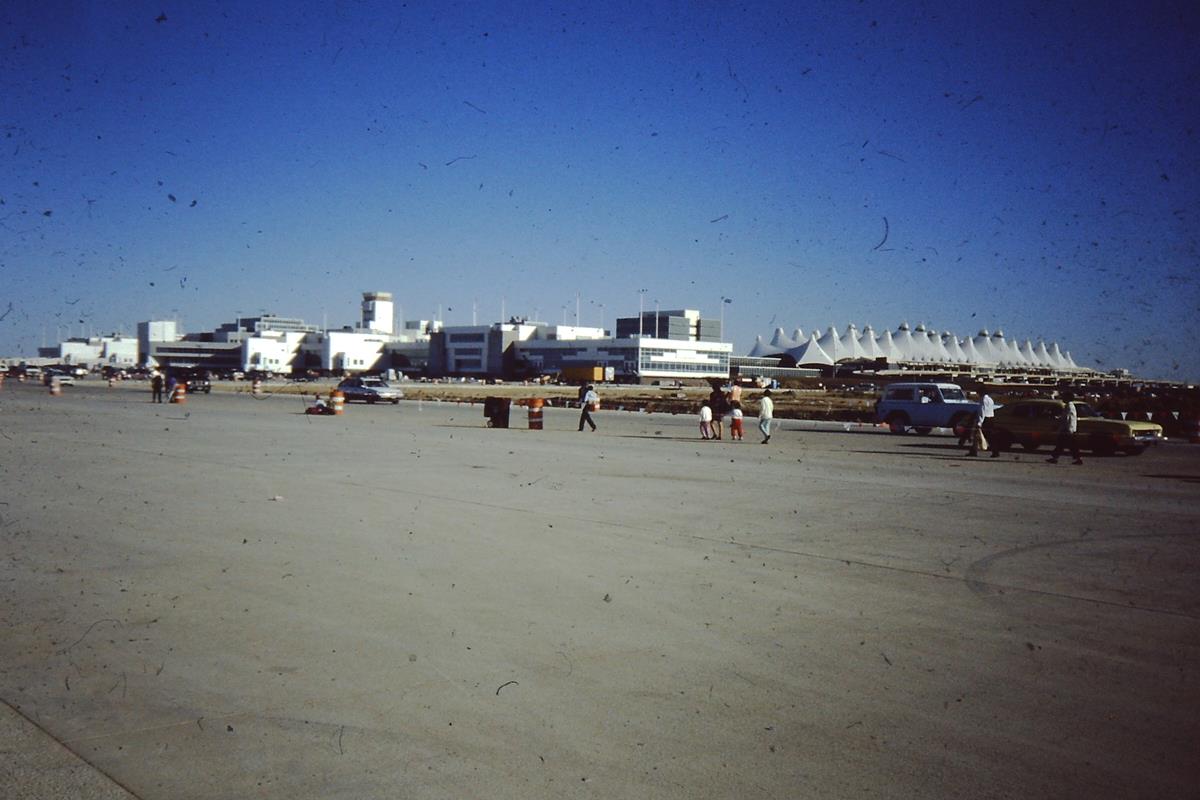 |
| Open House for New Denver International Airport, October 1993. |
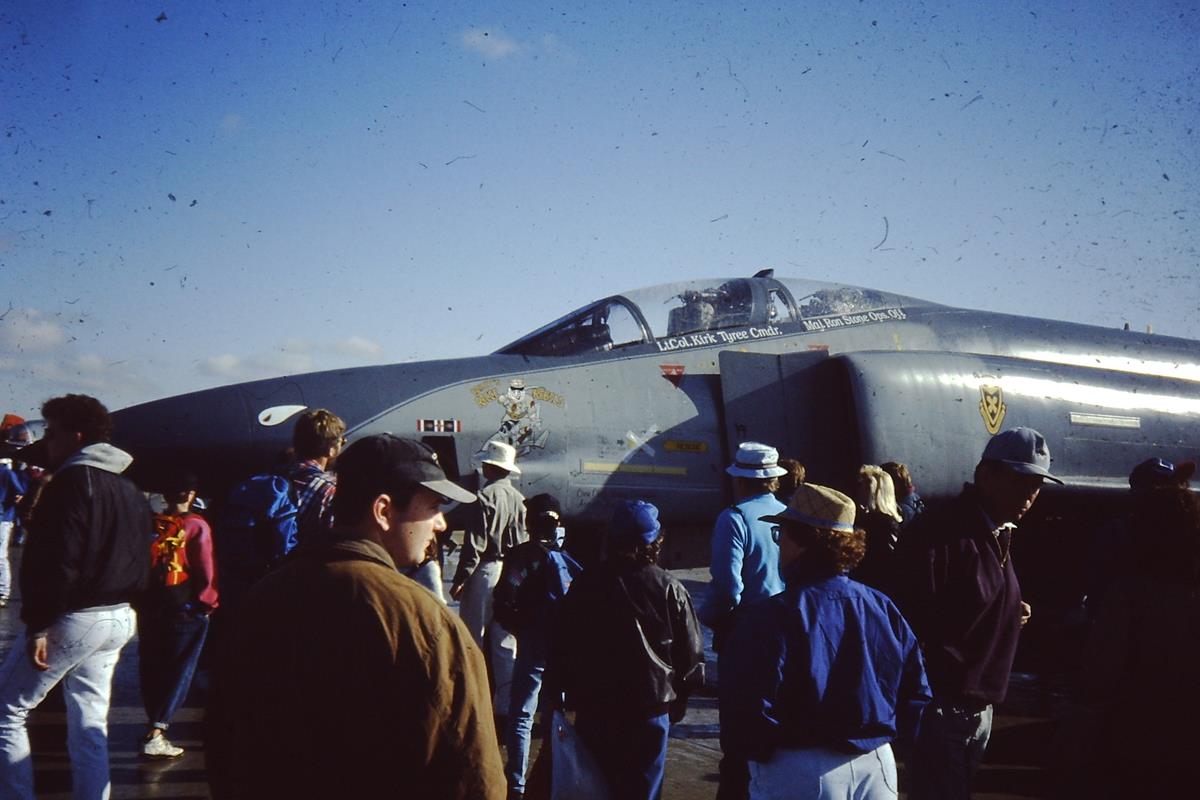 |
| Open House for New Denver International Airport, October 1993. |
The McDonnell Douglas F-4 Phantom II was a tandem two-seat, twin-engine, all-weather, long-range supersonic jet interceptor aircraft/fighter-bomber originally developed for the United States Navy by McDonnell Aircraft. It first entered service in 1960 with the U.S. Navy. Proving highly adaptable, it was also adopted by the U.S. Marine Corps and the U.S. Air Force, and by the mid-1960s had become a major part of their respective air wings.
The Phantom is a large fighter with a top speed of over Mach 2.2. It can carry more than 18,000 pounds (8,400 kg) of weapons on nine external hardpoints, including air-to-air missiles, air-to-ground missiles, and various bombs. The F-4, like other interceptors of its time, was designed without an internal cannon. Later models incorporated an M61 Vulcan rotary cannon. Beginning in 1959, it set 15 world records for in-flight performance, including an absolute speed record, and an absolute altitude record.
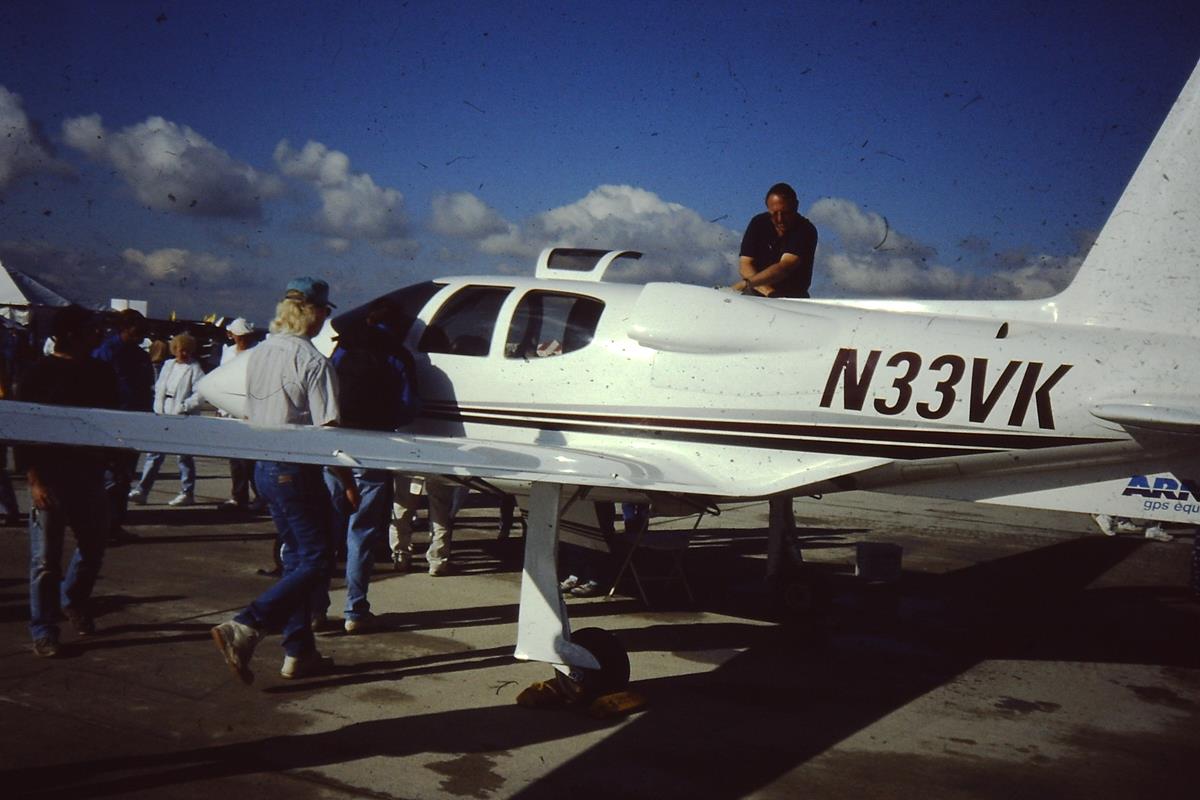 |
| Open House for New Denver International Airport, October 1993. |
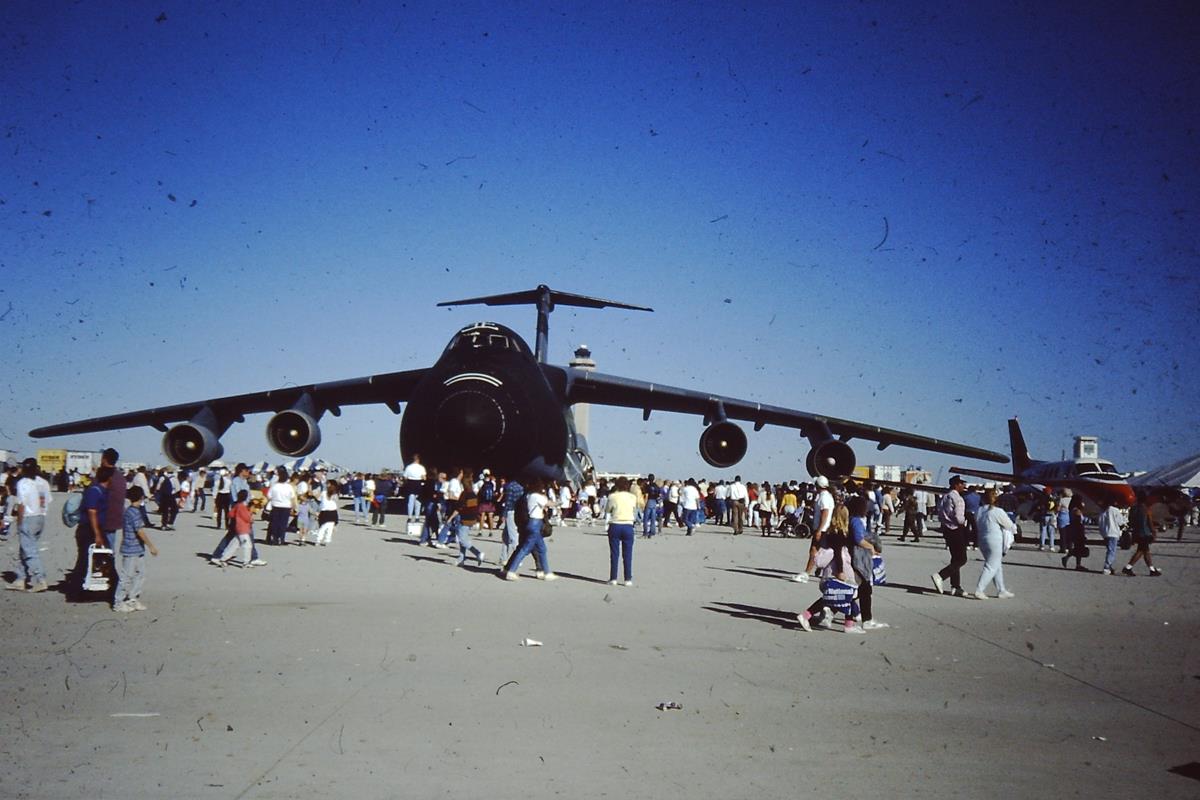 |
| Open House for New Denver International Airport, October 1993. |
Lockheed C-5 military transport aircraft, a heavy-lift cargo plane that can carry items as heavy as tanks.
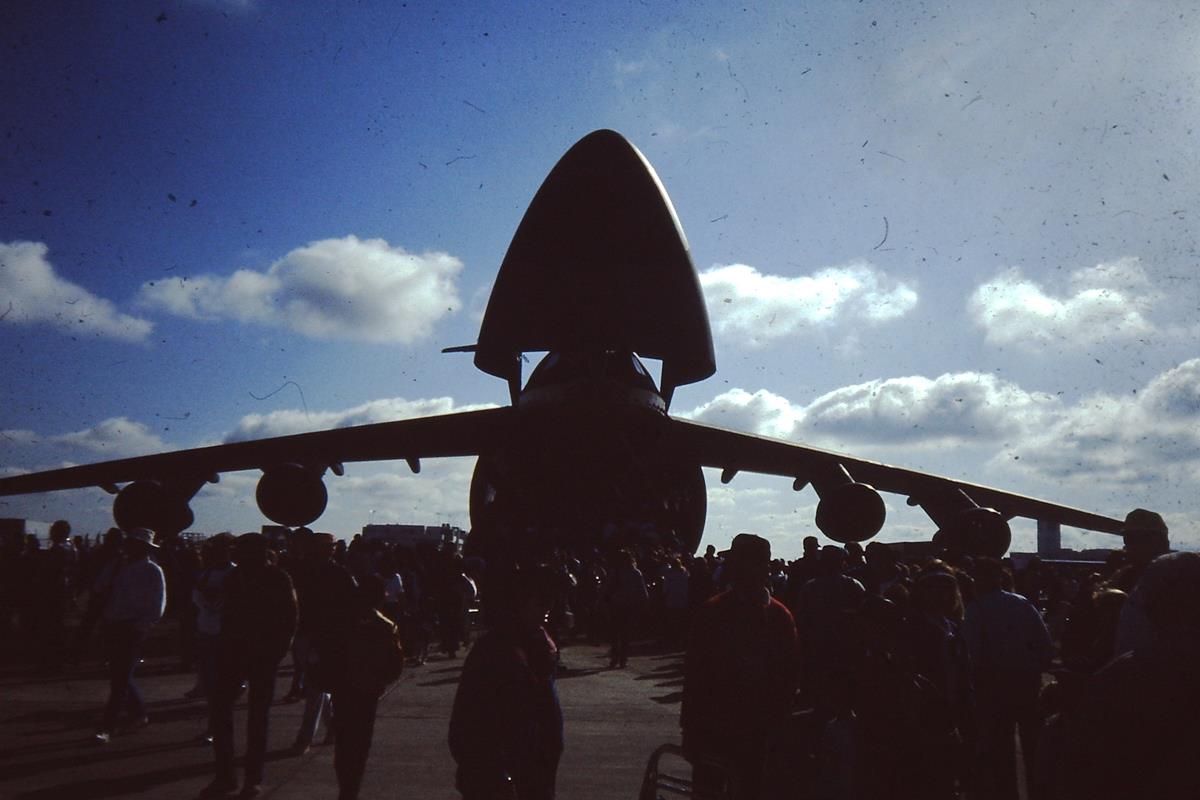 |
| Open House for New Denver International Airport, October 1993. |
In this view of the Lockheed C-5, the nose has been lifted to the loading position, revealing the inside of the plane.
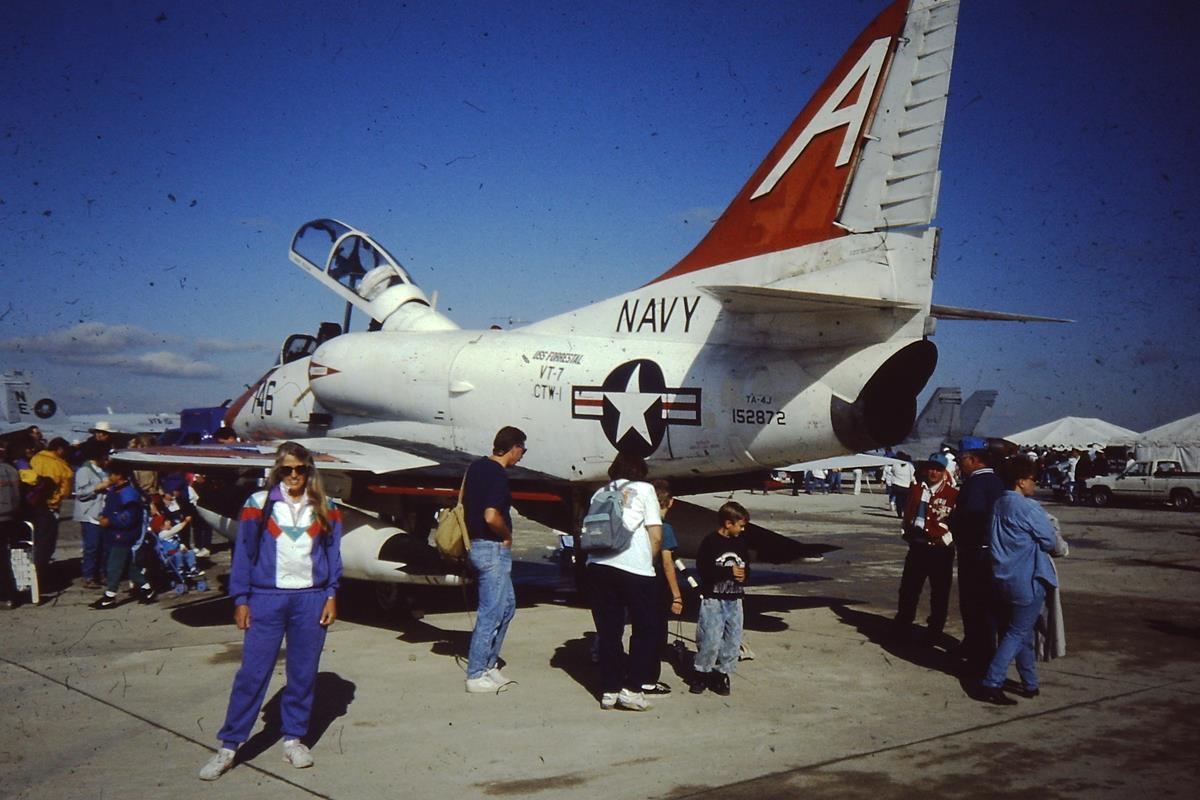 |
| Open House for New Denver International Airport, October 1993. |
Douglas A4D carrier-based Light Bomber used by the Navy, especially during the Vietnam War, 1963-1975.
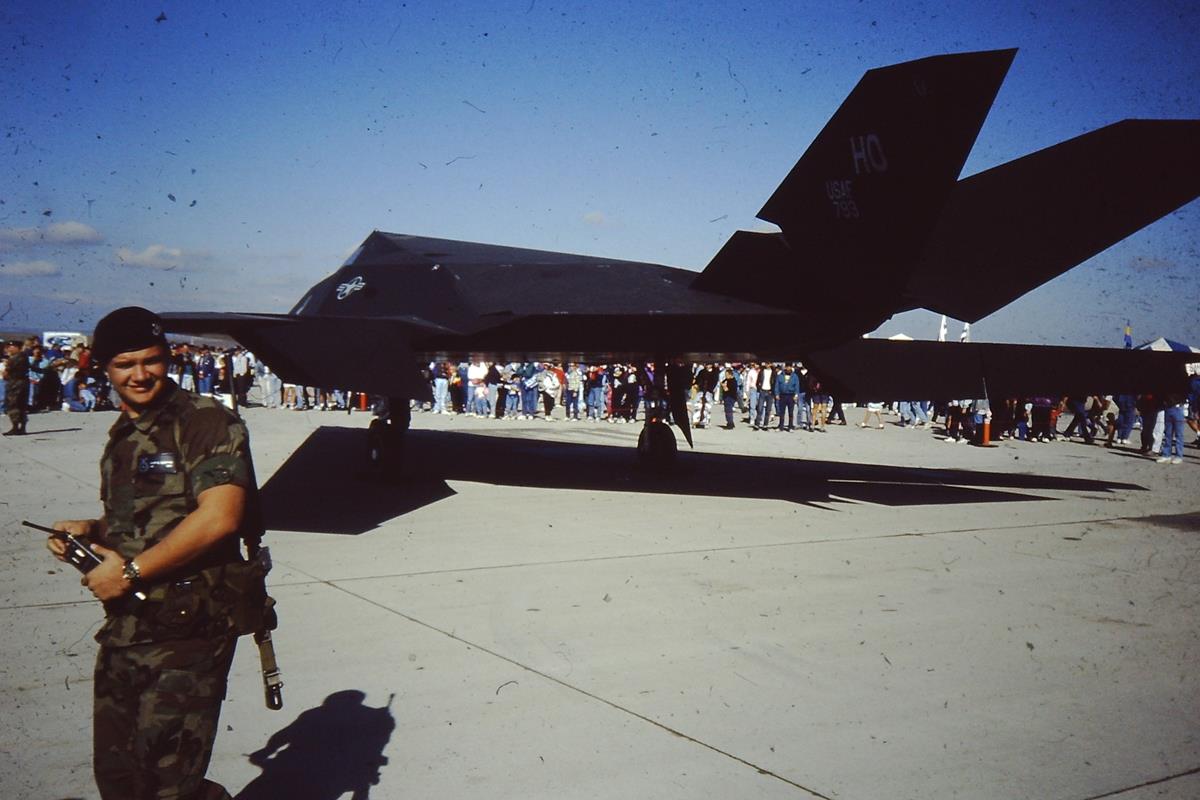 |
| Open House for New Denver International Airport, October 1993. |
Lockheed F117 Stealth Fighter/Light Bomber.
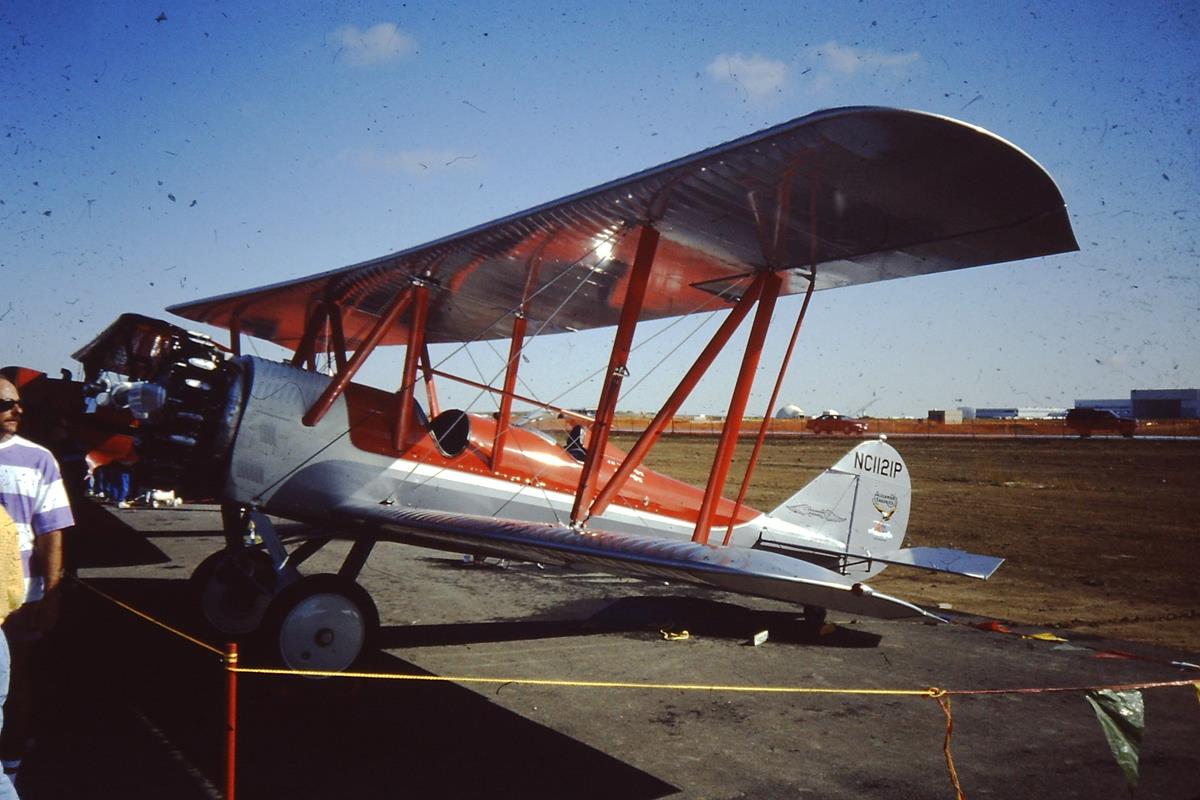 |
| Open House for New Denver International Airport, October 1993. |